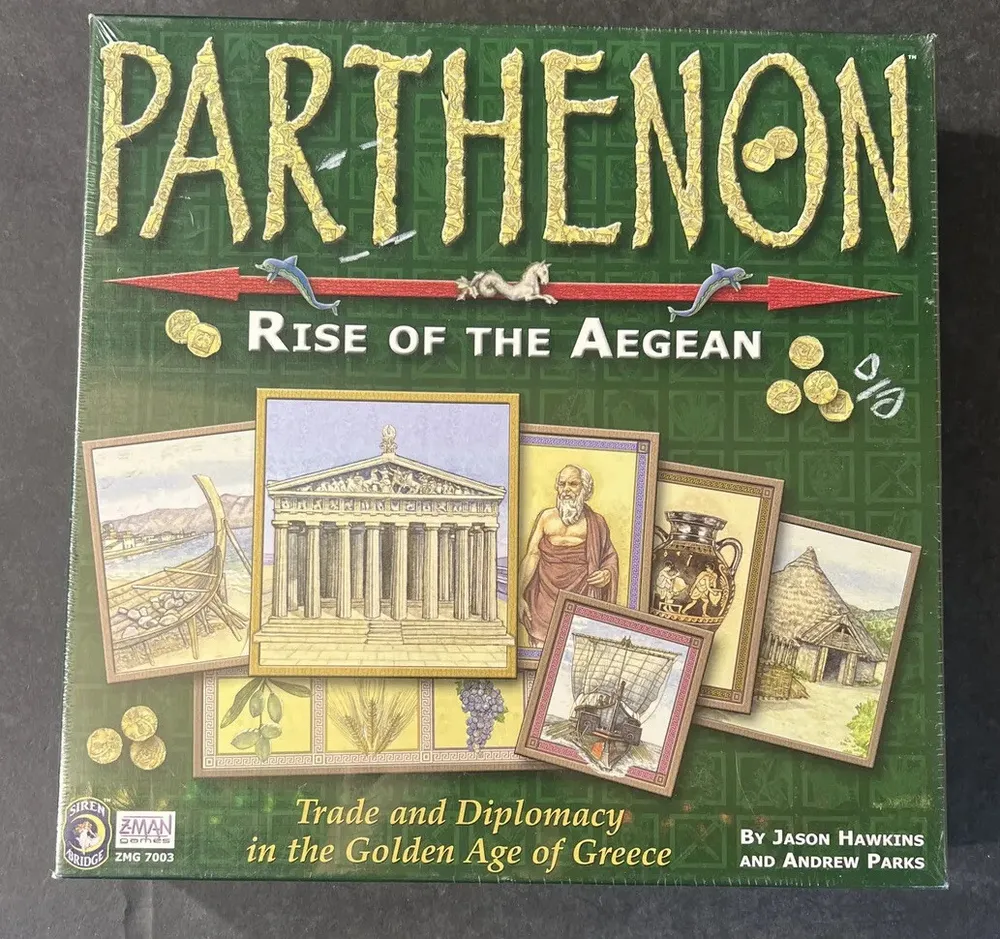Parthenon: Rise of the Aegean (2005)
Parthenon: Rise of the Aegean
Parthenon: Rise of the Aegean is a historical board game that simulates commerce in the Aegean Sea around 600 B.C. The game was designed by Andrew Parks and Jason Hawkins and is published by Siren Bridge Publishing and Z-Man Games, Inc. It is a game of commerce for 3-6 players set in the islands of the Aegean Sea. Each player begins with control of two villages and a fleet of ships on an island within the Aegean and develops their island through trade, adding villages and structures.
Why is Parthenon: Rise of the Aegean Popular?
Parthenon: Rise of the Aegean won “Board Game of the Year” during the 32nd annual Origins Award. It is a popular game among board game enthusiasts who enjoy games that involve strategy and resource management.
Game Components of Parthenon: Rise of the Aegean
How To Setup Parthenon: Rise of the Aegean
To set up the game, each player chooses one of the six Aegean islands and receives an island card, a build deck, and three fleet counters. The build deck lists everything the player can build. Two villages from the build deck and one ship are initially flipped face up, indicating they have already been constructed. The gameboard is placed on the table with six harbors indicated: three foreign (Italy, Carthage, Egypt) and three neighboring (Ionia, Sparta, Athens). Piles of basic and rare commodities, gold cards, philosophy cards, Aegis cards, and other decks (Wonder Plans, Hazard, Harbor Status, and Event cards) are placed near the board. One player is randomly selected to be the Archon and receives the Archon counter.
Gameplay Mechanics and Game Objective
Player Experience
**Parthenon: Rise of the Aegean** offers a rich and immersive experience with a multitude of choices. Players are engaged in aggressive trading, perilous voyages, and the construction of grand monuments. The game’s dynamic trading system and the need to balance risks and rewards make it both challenging and enjoyable. Even educational aspects are woven in, such as teaching about ancient Greek philosophies and the importance of trade goods.
Pros
Cons
Personal Thoughts on Parthenon: Rise of the Aegean
**Parthenon: Rise of the Aegean** is ideal for players who enjoy complex economic and trading games with deep strategic layers. It is particularly suited for those interested in historical settings and educational content. While it may not be the best fit for casual gamers due to its complexity and length, it is a gem for those who appreciate a rich and immersive gaming experience.
We are supported by our audience. When you purchase through links on our site, we may earn an affiliate commission, at no extra cost for you. Learn more.

